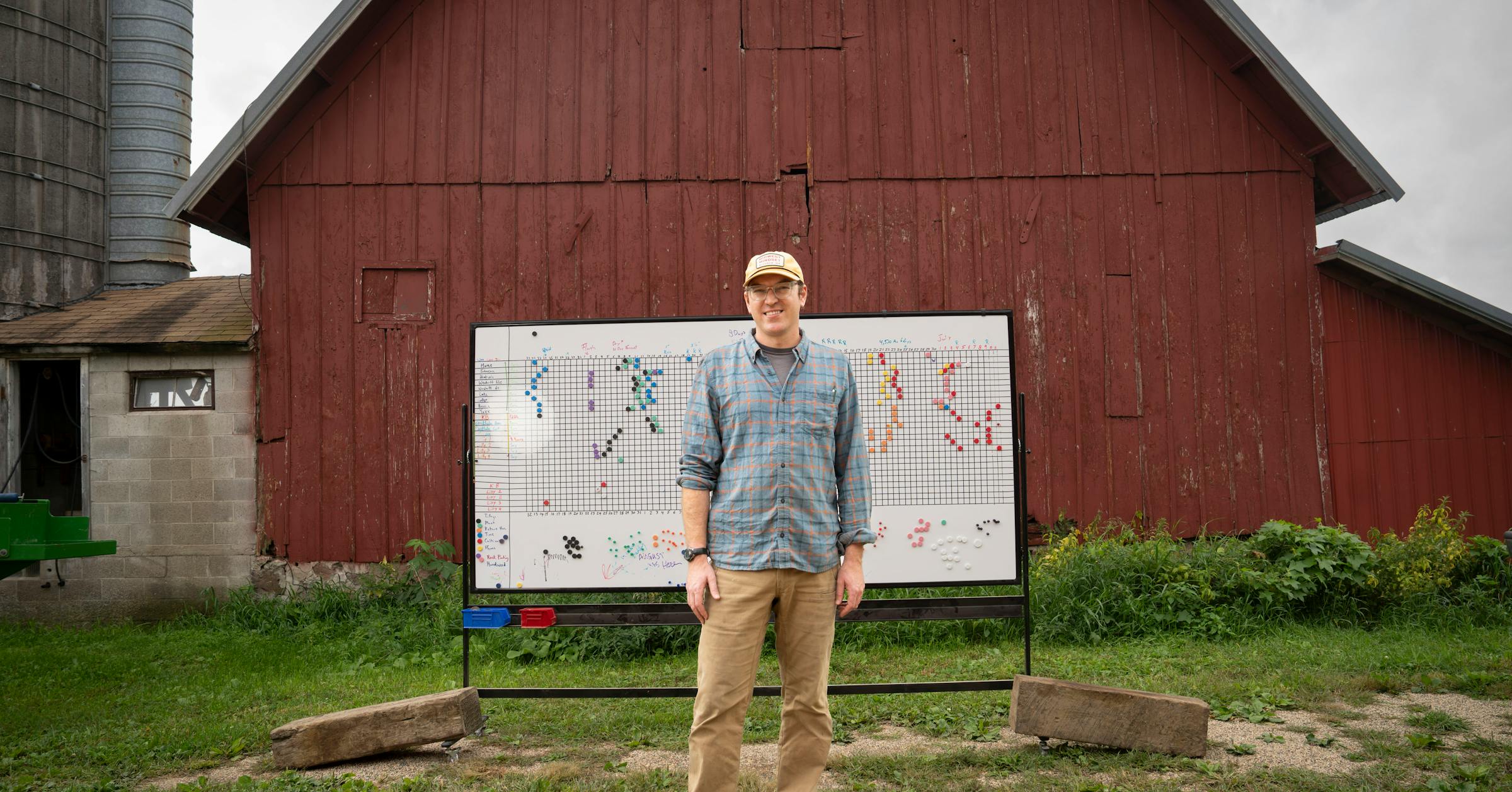Summary:
Matthew Fitzgerald transformed his whiteboard farm planning system into Farm Flow, a digital app helping farmers manage paperwork, labor, and inventory
Over 60% of farmers still rely on pen and paper for planning, creating a massive opportunity for digital solutions in agriculture
Farm Flow bridges the gap between expensive accounting software and manual methods, offering affordable digital planning for small to medium farms
The startup is testing in five states and was a runner-up in Minnesota's largest entrepreneurial competition, the Minnesota Cup
Farmers report significant time savings using the app on mobile devices during fieldwork instead of returning to notebooks or computers
The team is exploring AI integration while pursuing grant funding and seed investment to scale the platform
The Digital Transformation of Farming
Farming may appear old-fashioned to many, but this perception hasn't been accurate for years. Tractors now steer themselves, software processes crop data, and agriculture ranks among the most technologically advanced industries.
Yet inside barns and homes, many farmers—especially those running smaller operations—still plan their seasons the old-fashioned way: with notebooks and binders.
Against this backdrop, Glencoe farmer Matthew Fitzgerald wondered if there might be a better way. His solution evolved into a business: Farm Flow, a digital planning platform now being tested by farmers in Minnesota, Iowa, Illinois, Nebraska, and Montana.

"The goal of Farm Flow is to help farmers focus on farming and reduce all these stress points: paperwork, labor, inventory tracking," Fitzgerald said.
As farmers' finances become more complicated, the software might be arriving at the perfect time. Shrinking margins, rising input costs, and labor shortages have many farmers concerned about a looming financial crisis.
From Family Farm to Startup Idea
Like most farmers, Fitzgerald, 34, spends long days juggling fieldwork with scheduling and paperwork. To keep everything organized, he purchased a whiteboard.
By the end of the season, it was covered in magnets and notes that kept the farm on track. "We had our best year ever," the second-generation grower said.
But staring at that board, he wondered if he could take it digital.
Now, instead of flipping through binders, he checks his phone for labor schedules and inventory.
In Claremont, Mark Oeltjenbruns relies on Farm Flow to manage records and planning after switching from conventional to organic farming—a move that came with far more paperwork requirements.
"I can have it inside my combine on the tablet," Oeltjenbruns said. "If I'm walking across the farmyard, I have it right on my cellphone... You don't have to write in the notebook. You don't have to get home to the home computer and put it in on your Excel spreadsheet. It's right there."
Fitzgerald believes Farm Flow could fill a critical gap between expensive heavy-duty accounting tools and paper lists.
"We're trying to bridge the knowledge gap without pricing out farmers," he said.
Fitzgerald competed this year in the Minnesota Cup, the state's largest entrepreneurial competition. Farm Flow didn't win prize money, but it was named a runner-up in its division.
For Fitzgerald, the contest was about more than cash. He wanted input and advice from people who know startups, he said.
Fitzgerald's mentors in the competition provided "robust feedback on how to think about the business model, taking it to the next level," he said.

Finding the Middle Ground
While farming uses automation, Fitzgerald said, "60% or more of farmers still use pen and paper as their primary planning tool."
The gap is real, especially among smaller operations, said Garen Paulson, an assistant Extension educator at the University of Minnesota.
Most of the 120 large commercial farms he works with through the Southwest Minnesota Farm Business Management Association have adopted digital planning, he said.
It took those large farms more than a decade to switch over, he said.
"The younger generation, they grew up with computers," Paulson said. "That being said, I have some 70- or 80-year-olds who are fantastic computer bookkeepers, and then I have some 20-year-olds who struggle."

Universities have tried to ease the digital shift. The U's Center for Farm Financial Management offers a suite of tools that help farmers analyze their past finances and project into the future, said Paulson.
But barriers remain. The learning curve can be steep, especially for farmers who would rather be outside than behind a computer.
"Most farmers don't really enjoy bookkeeping," Paulson said. "They'd rather be out in their fields, so we almost have to force them each month to sit down and do their record keeping to do it regularly. But we found that if you do that every month, it's a whole lot easier than trying to do six months at one time."
The Future of Farm Planning
For Paulson, the story of agriculture's digital shift is really a story about balance. His father started farming with horses. By the time he retired, he had a tractor that steered itself.
"What's it going to be in my lifetime, in my son's lifetime?" Paulson said. "It will always be a balance between traditional and embracing new technology."
That calculation may determine whether tools like Farm Flow catch on.
Fitzgerald said Farm Flow will keep pursuing grant support while building a sustainable subscription model. He has also begun raising a seed round of private funding as well.
Meanwhile, his three-person, part-time team is already experimenting with new features, including an AI chatbot—"tiptoeing into AI," as he put it.
Another challenge is the right messaging. Fitzgerald said he needs potential customers to know he does not want to replace farming traditions. He wants to ease the stresses that overwhelm growers during the season.
"These practices have allowed our farm, a first-generation farm, to survive and grow," he said. "I want to help people find a different way."







Comments